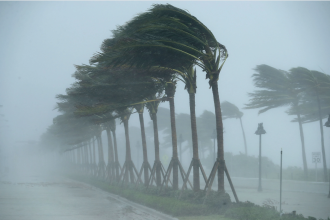Indiana follows what the insurance companies call at-fault insurance and doesn’t offer no-fault insurance. According to legal experts, at-fault insurance is the more traditional type of insurance that covers damages based on the at-fault driver’s percentage of liability.
What Is Fault-based Insurance?
Most states follow the fault system, where insurance payouts are based on determining drivers’ fault percentages for two or more vehicles involved in a crash. Fault-based policies offer options for suing for medical expenses, lost wages, and pain and suffering, but no-fault insurance often limits or denies compensation for various aspects of pain and suffering. That’s because juries often award astronomical settlements based on highly charged emotions.
That’s one of the major reasons that some states choose no-fault insurance to save on settlement costs and theoretically streamline the claims process. Unfortunately, that hasn’t always held up in reality, and injured victims can always sue drivers personally if the damages surpass insurance coverage limits. That applies to both fault-based and no-fault insurance coverage.
Fault-based insurance requires a liability limit for coverage, but the actual payout depends on your degree of fault. For example, if you are held to be 40% responsible for a car accident, you can only receive 60% of your claims up to the other driver’s coverage limit. After that, however, you can receive any underpayment from your underinsured coverage or sue the other if they have sufficient personal assets to cover the amount.
Filing a Compensation Claim in Indiana
Indiana law requires each driver to have minimal coverage of 25/50/25. That means insurance coverage of up to $25,000 for bodily injuries per person and an overall accident limit of $50,000. The coverage also includes up to $25,000 for property damage.
Much of your ability to recover damages from an insurance company depends on these limits, which is why many drivers opt for greater coverage to protect their personal resources from being attached in a worst-case scenario. You can ensure your protection by getting a higher limit on your insurance coverage in your auto insurance packet.
Shortcomings of Both Insurance Approaches
No insurance system can satisfy both parties because insurance is designed to strike a balance between the claimant and the insured party. That means negotiating the claims and trying to find a balance that both parties accept or pursue the matter in court. For example, fault-based insurance has coverage limits, and people injured in an accident receive no coverage in Indiana if they’re held to be 51% or more responsible for the accident.
According to insurance experts, injured victims in no-fault states must meet certain thresholds of injury severity to claim any pain and suffering compensation. Depending on the specific state, this threshold might include a description of injuries required or a minimum monetary value of medical claims. In addition, compensation claims might also limit claims for pain and suffering based on how long the resulting disability lasts.
Claims for Pain and Suffering
Your claim for accident compensation in Indiana can include three types of claims: economic, non-economic, and punitive damages. Economic damages include the direct costs of medical bills, property damage, lost income, etc. Non-economic damages include pain and suffering, loss of companionship, and loss of consortium, which refers to loss of interest or ability to pursue sexual relationships.
Pain and suffering can be based on physical injuries, mental anguish, chronic insomnia, loss of enjoyment of everyday activities, inconveniences, stress, grief, and worries about the future. Indiana insurance adjusters use a formula based on the total economic damages multiplied by a specific number based on the seriousness of the accident. Your attorney will usually argue for a higher multiplier.
Punitive damages can be awarded to punish a driver for blatant disregard of safety regulations, rules of the road, or deliberate attempts to injure the victim. Punitive damages often reach the highest settlement amounts, but it’s hard to prove the driver’s carelessness or intent.
Hiring an Attorney
The most important step of the claims process is hiring a car accident lawyer in Indianapolis. Your attorney can help you negotiate a higher insurance settlement or take your case to court. Experienced attorneys know all the rules and regulations to ensure you receive the maximum settlement allowed by law.















